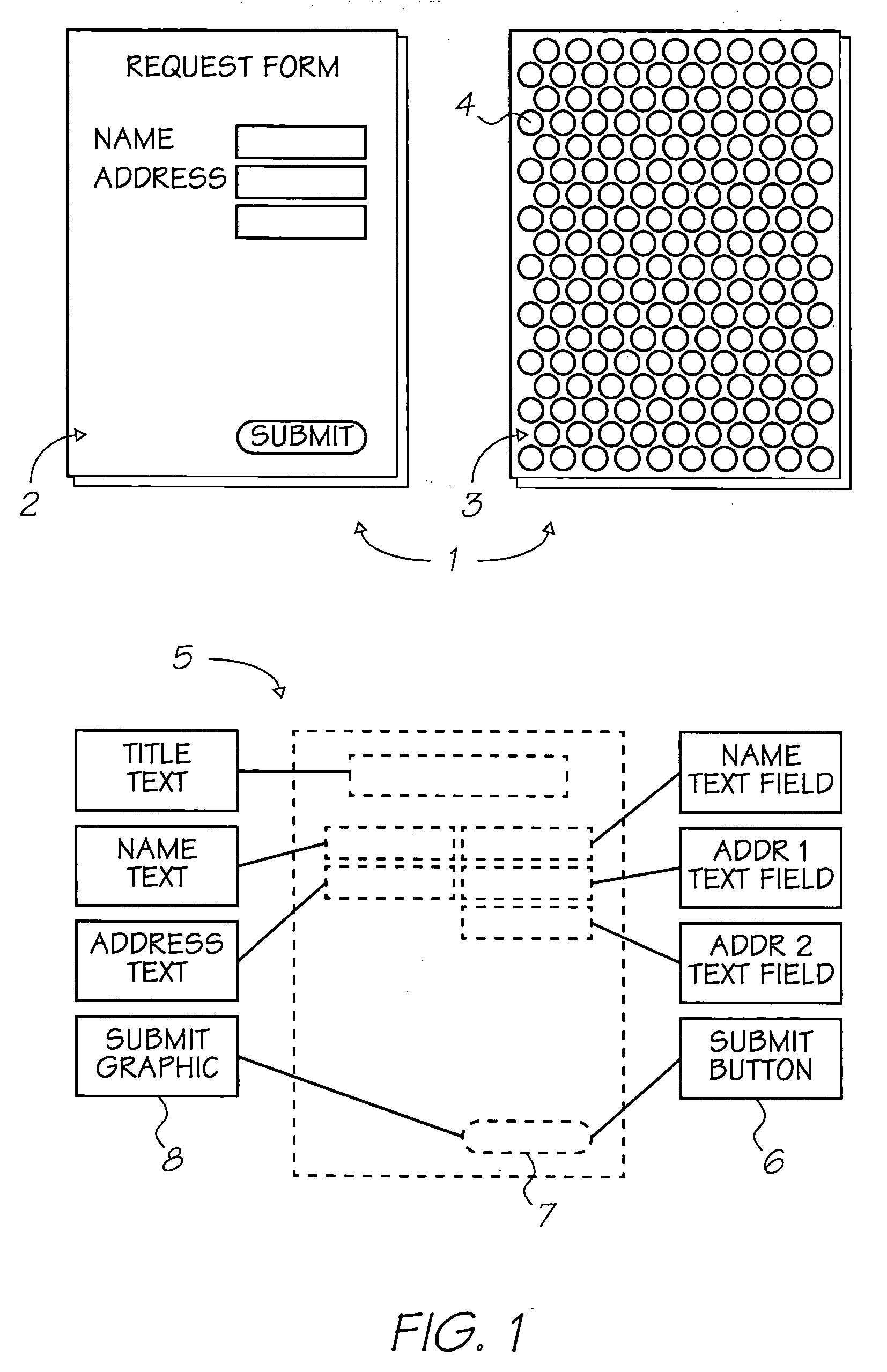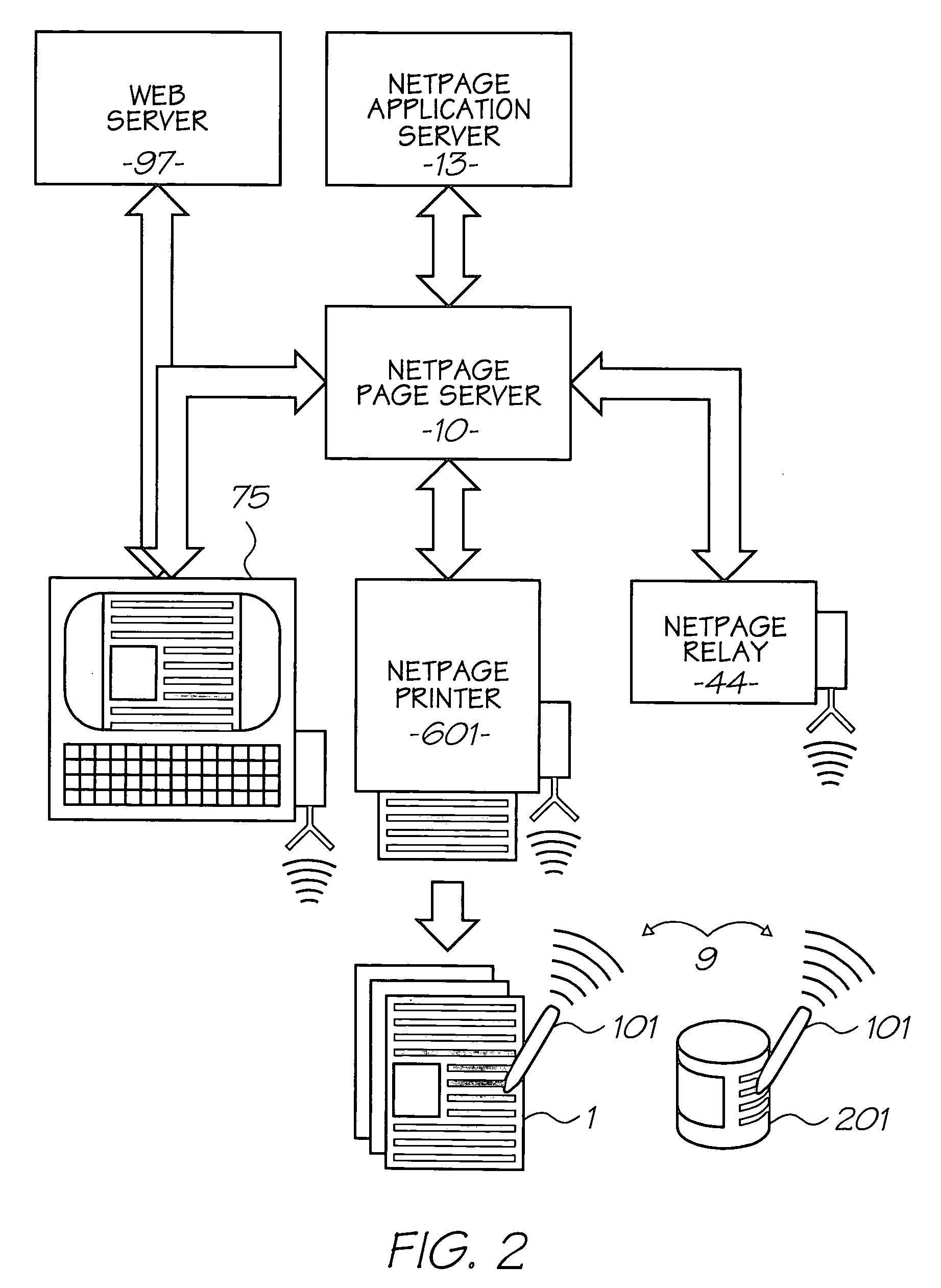Method of minimizing absorption of visible light in ink compositions comprising infrared-absorbing macrocyclic cyanine dyes
- Summary
- Abstract
- Description
- Claims
- Application Information
AI Technical Summary
Benefits of technology
Problems solved by technology
Method used
Image
Examples
example 1
(a) Metal Free Phthalocyanine—H2Pc(dib)4(OBu)8
[0405]
Lithium metal (78.2 mg; 11 mmol) was added portionwise to a boiling solution of the phthalonitrile (203 mg; 0.49 mmol) in n-butanol (10 mL). After 45 min the reaction mixture was cooled, and diluted with water (20 mL) and acetic acid (5 mL). The dark mixture was poured into water (200 mL) and extracted with chloroform (3×150 mL). The combined extracts were dried (Na2SO4) and the solvents were removed under high vacuum. The crude phthalocyanine was purified by column chromatography [alumina (activity grade I), toluene] to give the pure product as an apple-green powder (90 mg; 47%). λmax 760 (5.11), 732 (5.07), 693 (4.54), 660 (4.48), 402 (4.61), 331 (4.62); 1H NMR spectrum (CDCl3) δ−0.20 (2H, s, NH), 1.16 (24H, t, J=7.3 Hz, 8×CH3), 1.69 (16H, sxt, J=7.3 Hz, 8×CH2), 2.20 (16H, qnt, J=7.3 Hz, 8×CH2), 4.93 (16H, t, J=7.3 Hz, 8×CH2O), 6.50 (8H, s, 8×CH), 7.10-7.13 (16H, m, Ar—H), 7.63-7.65 (16H, m, Ar—H).
example 2
(b) Vanadyl octabutoxyphtalocyanine
[0406]
H2Pc(dib)4(OBu)8 (113 mg; 0.071 mmol) was suspended in dry DMF (5 mL) and then vanadyl acetylacetonate (97 mg; 0.37 mmol) and tributylamine (500 μL) were added consecutively with stirring. The resulting mixture was heated under reflux overnight, cooled and diluted with dichloromethane (200 mL). The solution was washed with water (100 mL), HCl (0.1 M; 2×100 mL) and saturated NaHCO3 (100 mL), and dried (MgSO4). Removal of the solvent left a dark green solid that was dissolved in toluene and purified by column chromatography on neutral alumina (toluene). The first green band contained the product and removal of the solvent afforded a green powder (90 mg; 76%). 1H NMR (CDCl3) (all signals are broad) δ1.15-1.26; 1.67-1.76; 2.1-2.4; 4.9-5.0; 6.4-6.7; 7.10-7.23; 7.64-7.70; λmax 768 (5.2), 688 (4.6), 401 (4.6), 357 (4.6), 331 (4.7) nm.
example 3
(c) Sulfonation of VOPc(dib)4(OBu)8 to VOPc(dib)4(OBu)8S8
[0407]
[0408] VOPc(dib)4(OBu)8 (22.7 mg; 13.7 μmol) in oleum (1.5 mL) was stirred at room temperature for 1 h. The deep blue solution containing the sulfonated derivative (presumed to be VOPc(dib)4(OBu)8S8) was first analysed by taking an aliquot and diluting it in DMSO to give a 10 μM solution. The resulting purple solution had λmax 843, 746 nm. The remainder of the reaction solution was quenched by carefully adding it to ice (5 g) and washing with sulfuric acid (98%, 0.5 mL) giving a total volume of 6 mL. Aliquots (4×1 mL) of this solution were diluted to 5 mL with either water (2× samples) or ink-base (2× samples). One of each pair of samples was neutralised with solid NaHCO3 to pH 7-8 while the other samples remained acidic (Table 1). The final concentration of each sample was ca. 4 mg in 5 mL (ca. 0.1% w / v). Each solution was applied to plain paper (80 gsm) with a brush and reflectance spectra were recorded on a Cary 5E s...
PUM
| Property | Measurement | Unit |
|---|---|---|
| Solubility (mass) | aaaaa | aaaaa |
| Interaction | aaaaa | aaaaa |
Abstract
Description
Claims
Application Information
 Login to View More
Login to View More - R&D
- Intellectual Property
- Life Sciences
- Materials
- Tech Scout
- Unparalleled Data Quality
- Higher Quality Content
- 60% Fewer Hallucinations
Browse by: Latest US Patents, China's latest patents, Technical Efficacy Thesaurus, Application Domain, Technology Topic, Popular Technical Reports.
© 2025 PatSnap. All rights reserved.Legal|Privacy policy|Modern Slavery Act Transparency Statement|Sitemap|About US| Contact US: help@patsnap.com



